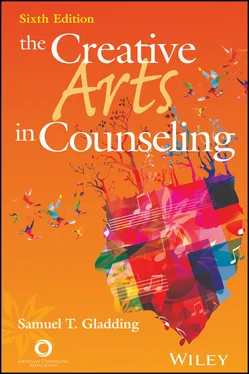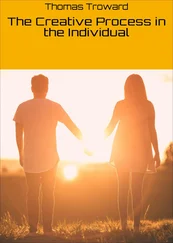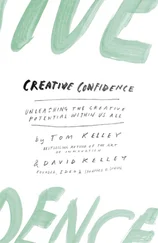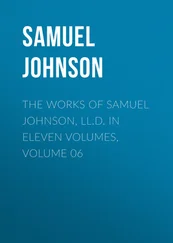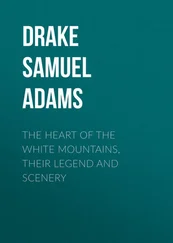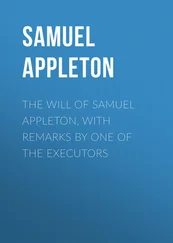Samuel T. Gladding - The Creative Arts in Counseling
Здесь есть возможность читать онлайн «Samuel T. Gladding - The Creative Arts in Counseling» — ознакомительный отрывок электронной книги совершенно бесплатно, а после прочтения отрывка купить полную версию. В некоторых случаях можно слушать аудио, скачать через торрент в формате fb2 и присутствует краткое содержание. Жанр: unrecognised, на английском языке. Описание произведения, (предисловие) а так же отзывы посетителей доступны на портале библиотеки ЛибКат.
- Название:The Creative Arts in Counseling
- Автор:
- Жанр:
- Год:неизвестен
- ISBN:нет данных
- Рейтинг книги:3 / 5. Голосов: 1
-
Избранное:Добавить в избранное
- Отзывы:
-
Ваша оценка:
- 60
- 1
- 2
- 3
- 4
- 5
The Creative Arts in Counseling: краткое содержание, описание и аннотация
Предлагаем к чтению аннотацию, описание, краткое содержание или предисловие (зависит от того, что написал сам автор книги «The Creative Arts in Counseling»). Если вы не нашли необходимую информацию о книге — напишите в комментариях, мы постараемся отыскать её.
*To purchase print copies, please visit the ACA website here
*Reproduction requests for material from books published by ACA should be directed to permissions@counseling.org
The Creative Arts in Counseling — читать онлайн ознакомительный отрывок
Ниже представлен текст книги, разбитый по страницам. Система сохранения места последней прочитанной страницы, позволяет с удобством читать онлайн бесплатно книгу «The Creative Arts in Counseling», без необходимости каждый раз заново искать на чём Вы остановились. Поставьте закладку, и сможете в любой момент перейти на страницу, на которой закончили чтение.
Интервал:
Закладка:
Music also makes a difference in reducing post-meal-related anxiety for adults with eating disorders (Bibb et al., 2019). In a study of 13 adult women in an outpatient facility who attended a 1-hour music therapy group following a lunchtime social eating challenge, anxiety decreased significantly. Group members chose, sang, listened to, and discussed familiar songs together from a songbook that included 50–60 popular songs. Their engagement in singing and talking focused their attention on their relationship with the music and not on their problems with eating, a strategy they could use after treatment.
Other research has suggested that in addition to offering adults sounds to relax by, music enhances movement (Park et al., 2019). Therefore, adults who are athletes or who regularly exercise can enhance their efforts by coordinating their physical movement with certain sounds. These positive effects occur because music either distracts people by causing them to selectively focus on pleasant stimuli or physically inhibits negative feedback transmissions (i.e., fatigue) because of the pleasurable electrosensory reactions it generates. Music is a prime ingredient in helping people physically and mentally maintain health or rehabilitate.
Another important function music plays in the lives of adults is enhancing experiences for them. Childbirth preparation is often linked with relaxing and soothing music that makes delivery, recovery, and bonding stronger. The type of exhilaration that results makes intra-personal and interpersonal relationships better. It promotes growth to the fullest. Other marker events in the lives of adults are equally enhanced through music. As Virginia Perry, a counselor in North Carolina, wrote about a workshop she attended in which each session was introduced by music, “He sings, and I forget myself. We move, one through another, vibrating the resonances of soul. These connected hearts and voices remain beyond time and place” (personal communication, July 19, 1991).
Older Adults
“Music serves two primary roles in the lives of older people. . . . First, it evokes emotions, memories, and past connections in the person’s life. Second, it can facilitate the enjoyment of shared interests and activities” (Duffey et al., 2006/2007, p. 52). Older adults benefit from participating in music. In fact, sharing a song can result in the creation of a therapeutic bond that affects the quality and longevity of life. For instance, in his Creativity and Aging study, Cohen (2005) followed a group of older adults averaging 80 years in age who participated in chorale programs at the Levine School of Music in Washington, DC, beginning in December 2001. After 2 years of comparing the music participants with a control group of similar individuals, Cohen found that the music participants
reported better health and fewer falls;
showed a slower rate of increase in doctor visits than nonparticipants;
increased medication usage at a significantly lower rate than nonparticipants;
showed greater improvements in depression, loneliness, and morale; and
increased social interaction while nonparticipants decreased interaction.
Overall, playing or making music with older persons has several goals, including the promotion of social interaction, the enhancement of self-worth, the encouragement of self-expression, the increasing of mood and energy, the lessening of pain, and the recall of past events (Clements-Cortés, 2017; Osborn, 1989; Rio, 2002). Ways of conducting sessions vary, and sessions may be carried out in a formal or an improvised manner. When sessions are formally conducted, members of these groups follow more of a schedule, and their personal or interpersonal gains may become secondary to the achievements of the group as a whole. If the sessions are less formally conducted, however, more creativity and interaction may occur with less music.
Creative Reflection
The beat of drums often has an effect on people as they go about their daily routines. Find some drum music and see how it affects you and what emotions surface as you hear it.
In reminiscence or in present-oriented social groups, music may be the key to encouraging discussion of past or present feelings and thoughts about events, such as learning, romance, loss, and family life (Duffey et al., 2006/2007). Music is typically played that revolves around a particular theme, such as the importance of home or family. This activity usually takes place after the group as a whole has warmed up by participating in a brief sing-along of familiar songs that includes their own accompaniment of clapping and foot tapping. This approach is effective at helping reduce depressive symptoms in older people (ages 73–94 years) with dementia (Ashida, 2000) and has value in other older group settings too.
In a maximum-participation group, members select their own music and theme. In less democratic groups, most of the selections are made by the leaders with particular foci in mind. Songs such as Jerry Butler’s “Only the Strong Survive” as well as Barbra Streisand’s “The Way We Were” and early American ballads like “My Old Kentucky Home” are used to set a tone and a mood that encourage talk and interaction after the singing has stopped.
Music may also be used with older adults to help them achieve better physical functioning. Rhythmic music, for example, acts as a stimulus for helping older patients with gait disorders improve the flow of their walk. In this process, the beat of the music serves as a cue for individuals in anticipating a desired rate of movement. In a brief 8-week study, Segall (2017) found other positive physical results of group singing with a population between 81 and 94 years old. Noting that reduced respiratory function can impact older adults’ nutritional intake, exercise endurance, and social engagement, Segall set up an 8-week group singing intervention. At the end of the intervention, she found that group singing meaningfully contributed to the respiratory health of this sedentary but healthy older adult population. The virtues of group singing as described by Segall are its cost-effectiveness; enjoyability; and value as a method of treating respiratory, voice, and swallowing function issues.
Families and Couples
Music by itself may be beneficial to families or couples because of its ability to evoke feelings and promote cooperation. Family-based music therapy is a term used to describe clinical work with children and families (Pasiali, 2013). The primary therapeutic focus is the facilitation of interaction and communication between family members to strengthen relationships. Shared musical experiences during family-based music therapy provide a context that influences a parent-child relationship. Feelings are often ignited or rekindled by playing music (Gladding & Heape, 1987). If a family or couple experienced contentment or positive affect at a previous stage, the music of that time may spark memories that help individuals within these systems to remember specific behaviors that were helpful in achieving harmony. Such memories once triggered can aid the family or couple in getting unstuck from behavioral stalemates and positively reinforcing one another.
A similar method initiated by the counselor may be used in marital counseling. In such a situation, the counselor prescribes a song whose lyrics represent issues brought forth by the couple. For example, Paul Simon’s “Train in the Distance” is a song about yearning to live in a better time. The last verse of the song speaks powerfully to this point:
“What is the point of this story? What information pertains? The thought that life could be better is woven, indelibly, into our hearts and our brains.” Using that lyric as a cue, the couple is then asked to listen to the song at home, using it as a metaphor from which to initiate discussion of relevant thoughts, feelings, and issues. (V. Perry, personal communication, February 20, 1996)
Читать дальшеИнтервал:
Закладка:
Похожие книги на «The Creative Arts in Counseling»
Представляем Вашему вниманию похожие книги на «The Creative Arts in Counseling» списком для выбора. Мы отобрали схожую по названию и смыслу литературу в надежде предоставить читателям больше вариантов отыскать новые, интересные, ещё непрочитанные произведения.
Обсуждение, отзывы о книге «The Creative Arts in Counseling» и просто собственные мнения читателей. Оставьте ваши комментарии, напишите, что Вы думаете о произведении, его смысле или главных героях. Укажите что конкретно понравилось, а что нет, и почему Вы так считаете.
